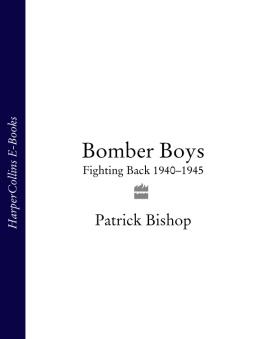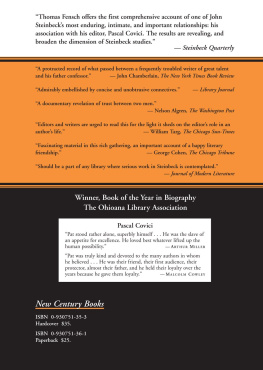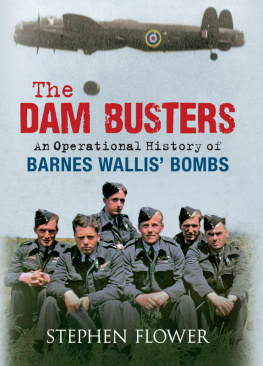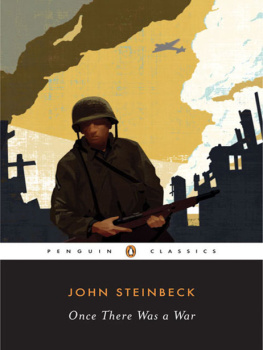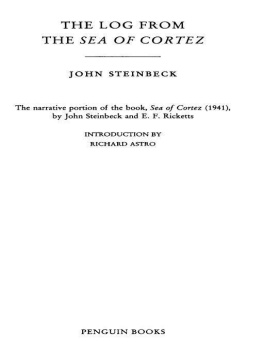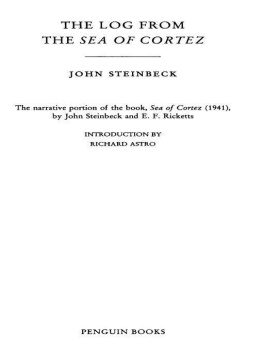BOMBS AWAY
Born in Salinas, California, in 1902, JOHN STEINBECK grew up in a fertile agricultural valley about twenty-five miles from the Pacific coastand both valley and coast would serve as settings for some of his best fiction. In 1919 he went to Stanford University, where he intermittently enrolled in literature and writing classes until he left in 1925 without taking a degree. During the next five years, he supported himself as a laborer and journalist in New York City and then as a caretaker for a Lake Tahoe estate, all the time working on his first novel, Cup of Gold (1929). After marriage and a move to Pacific Grove, California, he published two California fictions, The Pastures of Heaven (1932) and To a God Unknown (1933), and worked on short stories later collected in The Long Valley (1938). Popular success and financial security came only with Tortilla Flat (1935), stories about Montereys paisanos. A ceaseless experimenter throughout his career, Steinbeck changed courses regularly. Three powerful novels of the late 1930s focused on the California laboring class: In Dubious Battle (1936), Of Mice and Men (1937), and the book considered by many his finest, The Grapes of Wrath (1939). Early in the 1940s, Steinbeck became a filmmaker with The Forgotten Village (1941) and a serious student of marine biology with Sea of Cortez (1941). He devoted his services to the war, writing Bombs Away (1942) and the controversial play-novelette The Moon Is Down (1942). Cannery Row (1945), The Wayward Bus (1947), The Pearl (1947), A Russian Journal (1948), the experimental drama Burning Bright (1950), and The Log from the Sea of Cortez (1951) preceded publication of the monumental East of Eden (1952), an ambitious saga of the Salinas Valley and his familys history. The last decades of his life were spent in New York City and Sag Harbor with his third wife, Elaine, with whom he traveled widely. Later books included Sweet Thursday (1954), The Short Reign of Pippin IV: A Fabrication (1957), Once There Was a War (1958), The Winter of Our Discontent (1961), Travels with Charley in Search of America (1962), America and Americans (1966), and the posthumously published Journal of a Novel: The East of Eden Letters (1969), Viva Zapata! (1975), The Acts of King Arthur and His Noble Knights (1976), and Working Days: The Journals of The Grapes of Wrath (1989). He died in 1968, having won a Nobel Prize for Literature in 1962.
JAMES H. MEREDITH is a former lieutenant colonel and professor of English at the United States Air Force Academy. He has served on several literary-society boards and has written about F. Scott Fitzgerald, Ernest Hemingway, Stephen Crane, and Joseph Heller, as well as about Theodore Roosevelt, the American Civil War, and World War II. He is the author of Understanding the Literature of World War II (Greenwood Press, 1999) and Understanding the Literature of World War I (Greenwood Press, 2004), and is the co-editor of a forthcoming collection of essays, War in Hemingways Time (Kent State University Press, 2010). Currently, Professor Meredith is president of the Ernest Hemingway Foundation and Society and teaches American literature for Troy Universitys Global Campus.
MISSIONS
Before describing various missions assigned to the bomber team whose training we have followed in these pages, it might be well to look into the organization of the Air Force units and so understand how missions are planned and from where orders for them are issued.
To most people the units of the Army are well known, the corps, the brigade, the regiment, the battalion, the company, and the squad are very familiar. Perhaps the units of the Air Force are not quite so well known. It might be well here briefly to describe those units. The largest unit in the Air Force is the Wing and it would correspond roughly to a brigade in the land Army. It is the largest air fighting unit which one commander can efficiently control and directly supervise. In Winged Warfare by General Arnold and General Eaker, the following explanation is given of the organization of the Air Force. Of the Wing, they say: It is a tactical command as differentiated from an administrative command. The Wing Commander supervises the training and tactical operations of his groups and is not concerned primarily with administration and supply. These latter functions are performed by air base groups which are housed in peacetime on air bases with the tactical groups and which perform their administrative, supply and housekeeping functions for them.
The next unit under the Wing is the Air Force Group which is usually composed of three squadrons. Again quoting Winged Warfare: It was conceived as the largest air unit which one leader can efficiently control in the air. Tactical Groups are for the most part heterogeneous in that their three component squadrons will be of the same tactical type, that is fighter or bombardment. The Group corresponds to the regiment. It is both a tactical and an administrative unit. Its commander is generally of the rank of Colonel or Lieutenant Colonel and is always an experienced flying officer who is capable of leading his unit in air combat as compared to one who directs his command from the ground. The bombardment group, for example, is composed of 60 officers and 800 men. It has attached small units of ordnance, signal, and medical troops for service in the field. In addition, forward echelons of the air base units perform its housekeeping and airdrome functions when it is in the theater of operations. While stationed at a permanent air base, the air base group for that station performs these service functions for the combat group.
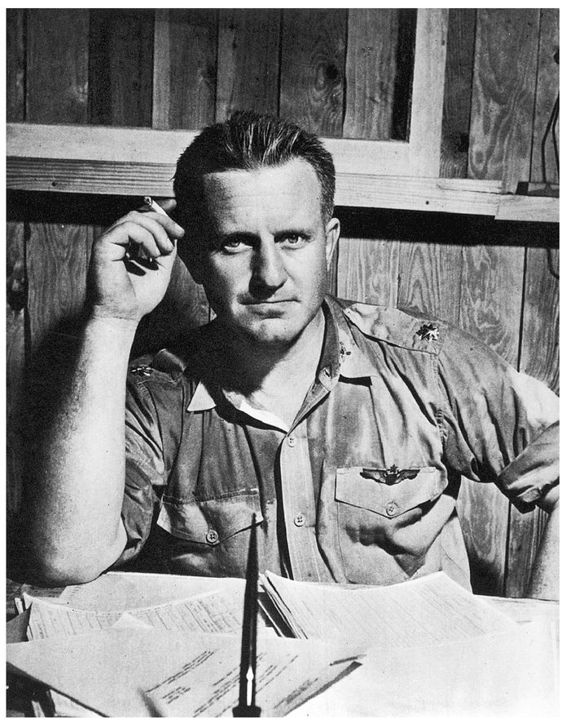
The Commanding Officer of a Bombardment Group
The squadron is the air unit corresponding to the battalion in ground arms. It is commanded by a major and is the basic flying combat unit. Squadrons of various types have different composition. For instance, a fighter squadron is composed of twenty-eight officers and 150 men and has for equipment 28 planes, while a bomber squadron has 21 officers, 180 men, and 13 planes. The squadron is deemed essential as is the battalion in the infantry, in order to have a unit sufficiently small in size to receive personal supervision, direction and control of one experienced officer and in order to provide for detailed training and first-hand direction of supply, discipline and combat methods. Squadron commanders are always flying officers of long experience and are selected for executive ability in the supervision of training and combat leadership. There are six types of combat squadrons with slightly different organization and personnel strength, dependent upon the type of aircraft they fly. These are transports; fighter; light; medium and heavy bombardment and reconnaissance.
To the member of the bomber crew, the squadron is the personal and familiar unit. He knows his squadron leader and his squadron leader knows him. It is in the squadron room where flight plans are made and where experiences are retailed after the mission. Group and wing are as remote as regiment and brigade are to the common soldier. The squadron leader has a very close and personal contact with his men, and being a flying officer he has their respect, for it is obvious that he knows a little more about operations than they do. In most cases the squadron leader is more than a military leader to his squadron. He is the source of advice and in many cases the custodian of the secrets of many of his men. The squadron leader is the pivot of liaison between the higher command and the units of the Air Force. He must have genuine administrative ability, but in addition to this he must have the common touch and the genuine force of leadership to weld the complex personalities of all of his unit men into a unit squadron. The squadron is movable. It keeps the records of individuals, it issues the orders, it recommends promotion, and prescribes punishment. From the standpoint of the men, the squadron is the most important unit in the Air Force.





